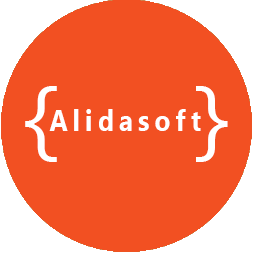
Description
This course is for individuals who seek an understanding of how to plan and migrate existing workloads to the AWS Cloud. You will learn about various cloud migration strategies and how to apply each step of the migration process, including portfolio discovery, application migration planning and design, conducting a migration, and post-migration validation and application optimization. Hands-on labs reinforce learning, and each lab is designed to provide you with the understanding and foundation necessary to complete migration tasks in your organization.
Product Code:
AWSM
Duration:
3 Days
Contents:
– Introduction to Migrating to AWS.
– What Is a Cloud Migration?
– Assessing Migration Readiness.
– Preparing for a Migration and Understanding Related Workstreams.
– Discovering Landing Zones and Their Benefits.
– Building a Landing Zone.
– Discovering the Portfolio and Understanding Migration Strategies.
– Understanding and Choosing Portfolio Discovery Tools.
– Planning and Designing a Migration.
– Performing the Migration to AWS.
– Understanding Database and Data Migration Services.
– Understanding Additional Migration Support Options.
– Integrating, Validating, and Cutting Over Applications.
– Modernizing and Optimizing an Application Migration.
– Understanding Operations Tools, Integration Testing, and Automation.
– Migration Best Practices.
Objective:
In this course, you will learn to:
– Recognize the common business and technical drivers for migrating to the cloud.
– Summarize the three phases of a migration and associated objectives, tasks, and stakeholders for each.
– Describe AWS architecture, tools, and migration best practices.
– Distinguish between the various cloud migration strategies and when each is most appropriate.
– Determine an organization’s application migration readiness.
– Discover a portfolio and gather data necessary for migration.
– Plan and design an application migration strategy.
– Perform and validate application migration to the cloud.
– Optimize applications and operations after migrating to the cloud.
Audience:
This course is intended for:
– Solutions architects.
– Software engineers.
– IT project managers.
– Operation leads.
Essentials:
We recommend that attendees of this course have:
– Familiarity with enterprise IT infrastructure (hardware and software).
– Completed the AWS Technical Essentials (AWSE) or Architecting on AWS (AWSA).
– Achieved their AWS Certified Solutions Architect – Associate (ACSAA) certification (optional).
Outline:
Day 1
Module 0: Introduction to Migrating to AWS.
– Course introduction.
Module 1: What Is a Cloud Migration?
– Summarize the drivers and desired outcomes of a cloud migration.
– Identify the elements of a successful migration journey.
– Describe the three-phase AWS migration process.
Module 2: Assessing Migration Readiness.
– Summarize the activities and goals of the assess phase.
– Evaluate tools for assessing your organization’s cloud readiness.
– Describe Migration Readiness Assessments (MRAs) and their importance.
– Group Exercise: Assess cloud migration readiness with AWS Cloud Adoption Readiness Tool (CART)
Module 3: Preparing for a Migration and Understanding Related Workstreams.
– Summarize the mobilize phase of the process.
– Discuss the eight unique migration-related workstreams.
Module 4: Discovering Landing Zones and Their Benefits.
– Explain the function of a landing zone.
– Discuss best practices for creating a custom landing zone.
– Describe how you would use AWS Control Tower to create a landing zone.
Module 5: Building a Landing Zone.
– Summarize the process of building a landing zone.
– Determine the best multi-account structure, governance policies, and connectivity plan for a landing zone.
– Demonstration: AWS Control Tower.
– Hands-On Lab: Connecting Your On-Premises Network and Directory Services to AWS.
Module 6: Discovering the Portfolio and Understanding Migration Strategies.
– Explain the activities of the detailed portfolio discovery workstream.
– Describe how to assess an application’s migration readiness.
– Summarize the seven migration strategies.
– Group Exercise: Choose the best strategy (scenario-based).
Day 2
Module 7: Understanding and Choosing Portfolio Discovery Tools.
– Summarize the various discovery tools available.
– Distinguish which tools are best to use based on scenario.
– Hands-On Lab: Gathering Application Data Necessary for Migration.
Module 8: Planning and Designing a Migration.
– Describe the planning and design process.
– Summarize how to set up a migration factory.
– Choose and finalize an application migration strategy.
Module 9: Performing the Migration to AWS.
– Explain the server migration process.
– Discuss the various migration automation and governance tools available.
– Evaluate server migration tools for compatibility with your environment.
– Hands-On Lab: Migrating an Application to AWS.
Module 10: Understanding Database and Data Migration Services.
– Summarize the significance of database and data migration.
– Discuss the various data migration tools available.
– Hands-On Lab: Migrating an Existing Database to Amazon Aurora.
Day 3
Module 11: Understanding Additional Migration Support Options.
– Discuss additional migration support options.
– Summarize AWS Managed Services and AWS Marketplace.
– Describe SAP on AWS and services offered for Windows.
Module 12: Integrating, Validating, and Cutting Over Applications.
– Discuss the process and benefits of integrating, validating, and cutting over applications.
Module 13: Modernizing and Optimizing an Application Migration.
– Identify post-migration opportunities for modernization and optimization.
– Understand cost and security optimization processes.
– Explore tools available to support these processes.
– Hands-On Lab: Optimizing an Application with Amazon S3 and Amazon ECS.
Module 14: Understanding Operations Tools, Integration Testing, and Automation.
– Summarize operations in the cloud.
– Discuss four functions of operations and their domains.
– Review operations automation and relevant support tools.
Module 15: Migration Best Practices.
– Course review and key takeaways.
– Summarize and reinforce AWS best practices for migrating.
– Hands-On Lab: Automating Application Deployments.
Course Dates
|
Class I'D
|
Start Date
|
End Date
|
Duration
|
Timezone
|
Book Now
|
|---|---|---|---|---|---|
|
1902697
|
08-04-2024
|
10-04-2024
|
3 Days
|
Europe/London
|

